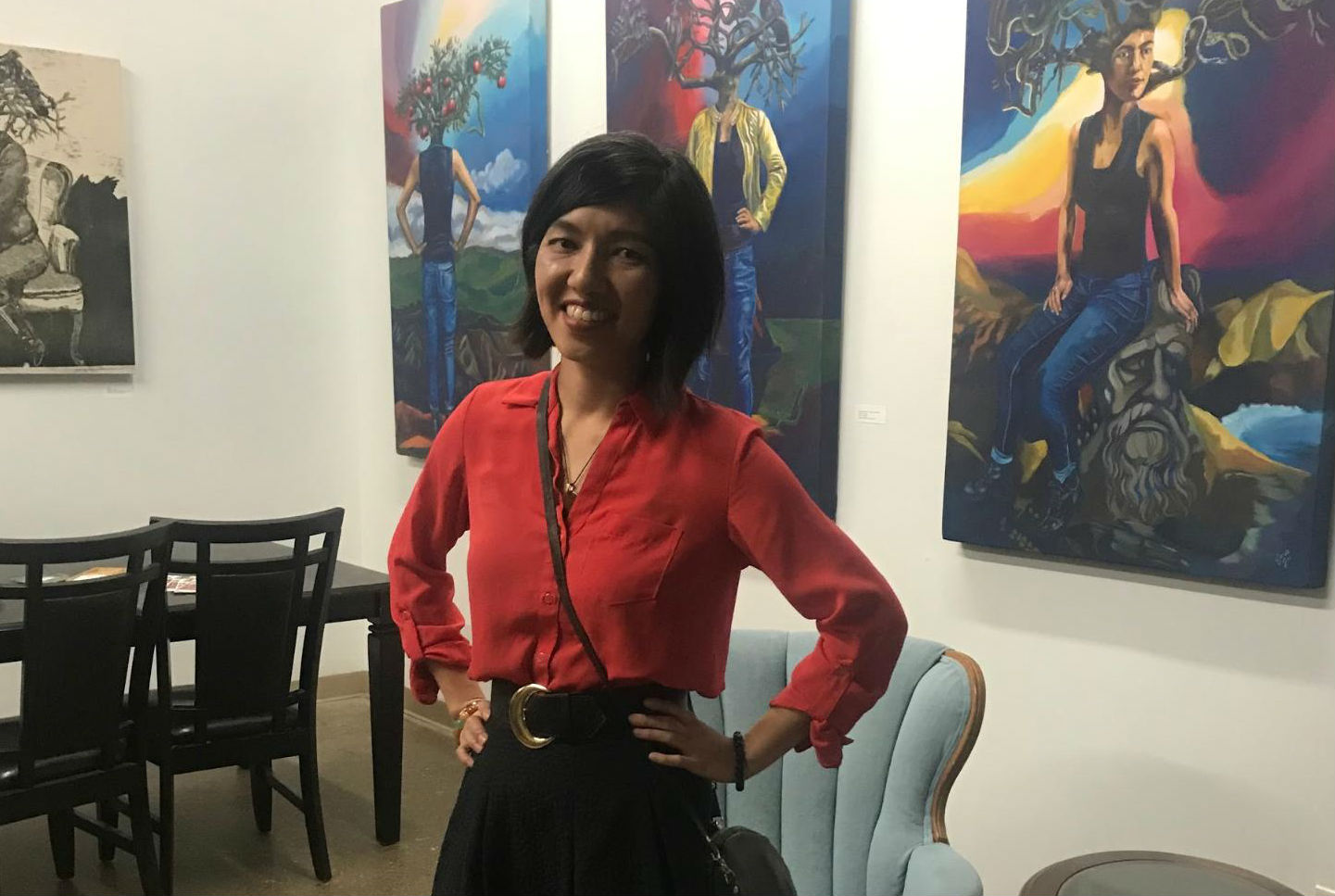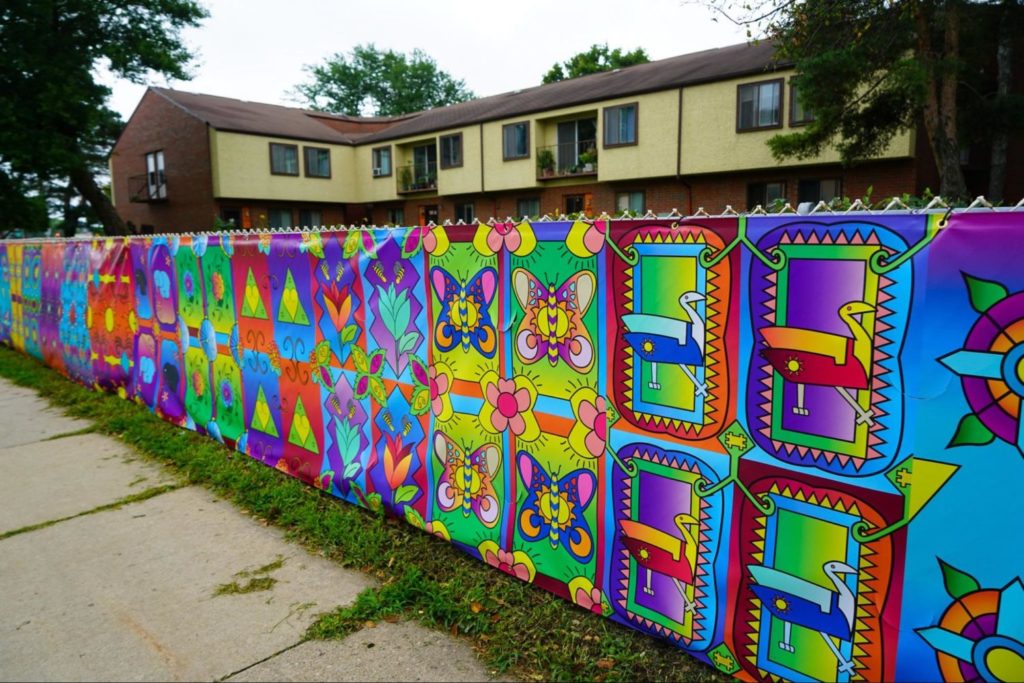
Madison-based artist Jenie Gao held a grand opening to her new studio on East Main Street on Friday, October 4.
Gao, who is also a full-time creative director and entrepreneur, celebrated her new studio with an open tour, complete with works from recent and previous years.
“It feels wonderful,” she said. “It’s a very special milestone.”
Gao started her art business five years ago and has worked since then to take up space and make it profitable in a state with low public funding for the arts. Wisconsin is currently 48th in the nation for the arts funding, which has made her entrepreneurial journey difficult. Being an artist of color has also made it hard for her.
“Only one percent of artists make it to being full time,” she said. “And artists of color only make up 12 percent of the art world. Women of color, specifically, only make up half of one percent of the art world. It feels like a really necessary thing for artists like me, as a woman of color, to take up space. Both in the business world and in the art world. And to be a part of defining the culture that represents all of us.”
As for the location of her studio, Gao wanted to be somewhat central and surrounded by other local businesses.
“I started my search back in January,” she said. “I needed a space that had high ceilings and long walls. I make murals and make a lot of really big work. I also needed access to practical things like a loading dock, big double doors to bring in equipment. It’s also part of an ecosystem that I want to be in. Right by other small and creative businesses, and how close the epicenter of the city was. I didn’t just want to space that fit the type of work that I do. I wanted a space that was in proximity to other businesses that I really felt like I could function with as a part of a community and a healthy ecosystem. ”
Another reason Gao chose her location was the fact that she wanted it to be accessible to as many people as possible. Her new studio is on the bus line, and because she works with a lot of interns, it was important that they could get to the studio at a reasonable time.
“I work with a lot of people in the community who might not have a car. So I couldn’t rent one of the big warehouses that’s farther outside of town because, by bus, it takes an hour and a half or two hours to get there. And there’s no way that I could work with the community, or with any of the interns if I were that far outside of the city and off of public transportation. So those were the factors that I was looking for.”
Gao has done many community-based projects, the most recent addition being a mural along the perimeter Bayview apartments, an affordable housing neighborhood in Madison. The project was in collaboration with students for the Bayview Foundation.

“I really love the power of big statement works of art to transform a space,” Gao said.
Phoebe Schlough, a friend and fan of Gao, was excited about what the new studio could mean for Gao.
“The stuff she does and the social commentary on her work is incredible,” Schlough said. “She is addressing migration and borders in a lot of her work. The fact that she’s putting herself out there is so valuable.”
Gao hopes her new studio will be a challenging statement to gentrification.
“It’s a predictable pattern. Artists and nonprofits move into an area that is relatively affordable, that other businesses don’t want to start up in,” Gao said. “They make that area vibrant and cool, and cultural. And then it becomes expensive, and everybody else moves in, and they push the artists out. So one of the big things that I’ve really emphasized as an artist who is an entrepreneur, is that artists need to be paid for their work. So my hope in having my business here is that I am putting a stake in the ground here, saying that the artists are not getting pushed out to the outskirts to another area that the city might want to gentrify. We see all these big buildings going up, we see the startups coming in, we see the tech companies moving in, all this is happening on the 800 block of East Washington and artists should be a part of it. And that this should be an art district because that’s how you maintain a vibrant culture and a stable city ecosystem.”



